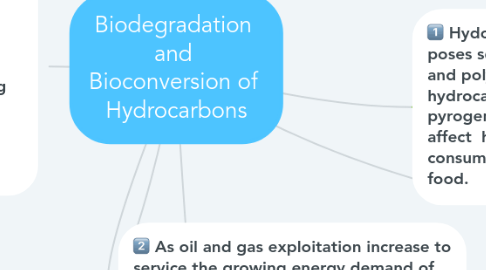Biodegradation and Bioconversion of Hydrocarbons
by Luis Enrique Bocanegra

1. VERY IMPORTANT...Although fossil fuels are rich sources of saturated (aliphatic) and aromatic hydrocarbons, it is generally agreed that most of the PAH and many of the aliphatic hydrocarbons in soils and sediments are derived from incomplete combustion of organic matter at high temperatures. Combustion of any organic material, including fossil fuels, will result in the generation of a wide variety of PAH, particularly if combustion takes place at temperatures above about 400 °C in an oxygen-deficient environment.
2. As oil and gas exploitation increase to service the growing energy demand of the fast rising population, so should our attempts to manage soil, water and air pollution in an economic and environmentally sustainable way.
3. Polycyclic aromatic hydrocarbon (PAH) compounds represent one of the homologous series of hydrocarbons used for product-type identification in environmental samples. These hydrocarbons are analyzed using gas chromatographymass spectrometry (GC/MS) methods (Douglas et al. 1992; Kaplan et al. 1997).
4. Microorganisms living in hydrocarbon-contaminated environments often produce biosurfactants for improved access to hydrophobic organic constituents. Owing to the non-toxic and biodegradable nature of biosurfactants, they have wide industrial applications, from enhancing bioremediation outcomes to healthcare and food sectors.
5. The need to establish sources and associated potential liability associated with releases of hydrocarbons into the environment warrants comprehensive chemical contaminant characterization. The aim of this characterization is to identify contaminant type and sources(s), distinguish spilled product from background hydrocarbons, and assess the impact on the ecosystem. Such a characterization is commonly accomplished utilizing chemical fingerprinting, which in turn relies on evaluation of distribution patterns in different classes of hydrocarbons comprising the bulk of the hydrocarbon product (Kaplan et al. 1997).
6. OIL AND ITS ENVIRONMENTAL POLLUTION
7. Hydorcarbon oil contamination poses severe environmental risks and polycyclic aromatic hydrocarbons (PAHs) arising from pyrogenic origins can adversely affect human health through consumption of contaminated food.


